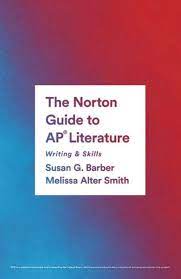Over the years I have helped hundreds of seniors with their college essay, providing advice on how to nail the opening, find their voice, write with clarity, and reveal something authentic.
I distilled the most common mistakes into a blog post that has done well on this site, and I created a slide deck that provides some sound advice on the hardest part — getting started. It gave me pride knowing that I have helped students get through a stressful experience, one with pressure to be smart (without being too smart), witty (without sounding silly) wise (without the hubris), and selfless (without glorifying one’s ego) in 650 words or less. As a result of writing about it on this blog and sharing the slide deck, I have helped other teachers and their students, taking the concepts that I have used year after year, enabling it to live beyond my classroom.
All that changed a few days ago when a colleague forwarded me two YouTube videos from a college essay guru. Its visual components were matched with audio and graphics, all synthesizing into a dynamic whole. When I pulled up my college essay slide deck that I have used for years, I realized how dusty it was. It felt so static. IT WAS CREATED IN POWERPOINT and has not been updated since.
THE TRAP
Every teacher reaches a point when they have built something — a unit or a series or lessons — that finally becomes really good. It articulates the content, it engages students, and it achieves the desired outcome. That moment almost never comes in a teacher’s first year — but it can make its arrival in year two, five, ten, whenever. And it will be good enough.
It will work the next year, and the year after that, and it can carry you to the rest of your career. The mind can rest. The heart need not palpitate any more. You no longer fear the unknown and unpredictable. The trap of complacency has been set.
If, like me, you are cringing because you see a bit of yourself in all this, DON’T!!!
In a way, this is a completely natural process. Humans are wired to find comfort in safety. We have a strong need for predictability because it allows for easier decision-making, reduced stress, and likely success. We seek to maintain equilibrium in classrooms, which can be highly unpredictable environments. When we incorporate change, we invite things new and different into our teaching, which can elicit three states –unfamiliarity, unpredictability, and lack of control — which we are hard wired to avoid.
Safety has consequences, though.
The problems are threefold:
- When a teacher returns to the same exact lessons, year after year, they are shoehorning the students into the unit, rather than recognizing the subtle differences in their students each year and tailoring the unit to their ever-changing needs. While you can look at the predictability of an established unit as an advantage for a teacher, it can also limit them. Good educators adapt to changing circumstances.
- A teacher’s enthusiasm slowly, and at times, imperceptibly dulls. Excitement is replaced by reassured predictability. A teacher’s anticipation to teach the unit, their delivery of the unit, and their response to student work and discussion within the unit wanes over time.
- Familiarity and routine leads to cognitive biases like confirmation bias, where a teacher selectively interprets information to fit our existing beliefs. If a unit worked well in the past, it must be working well now — even if it isn’t.
THE PROMISE
I want to offer you a vision of who you can be as a teacher if you resist the urge to rest on your past successes and commit yourself to continuous improvement. The teacher that is constantly tweaking, updating, improving, refining, and re-articulating, is the one that is still maintaining comfort and security, but is also inviting curiosity, exploration, and the desire to go beyond what is comfortable and familiar.
This type of teaching engages the mind and nourishes the spirit. It fosters a relationship with a unit that allows a teacher to think, feel, and respond in the most meaningful, fulfilling, and joyful ways because it is organically blooming rather than remaining static and closed. It nourishes the teaching spirit to grow, and flourish.
HOW TO LEVEL UP YOUR TEACHING
Leveling up isn’t necessarily about adding more to a unit. It is more about refining what you already have and making it better. Here are five ways in which you can level up your teaching:
- Look for Transfer Opportunities — The skills students use to analyze literature are similar to the skills one uses to analyze film, paintings, sculpture, and music. Can you find a film clip that shows the exact same skill you are practicing, just applied to a different medium? I recently used this powerful analysis from Every Frame a Painting to show students the power of narrative perspective as we read John Cheever’s “Reunion.”
- Cultivate Better Student Samples — Each year that you collect student work present the opportunity to refine the samples that you use as models.
- Explore the Work of Others — The internet is an incalculable blessing for teachers because it provides the opportunity to see understand, download, and purchase the work of others. Perhaps another teacher has a perfect list of words to describe tone that isn’t too long, isn’t too short. Maybe a Facebook group, with its 16,000 members strong, can stave off the Sunday Scaries and give you a lesson when you are desperately need one. Or maybe you’d like to level up your Kite Runner unit, and you want to see what someone else’s wisdom has to offer.
- Pull in Other Subjects — No subject is its own island. It all exists on a continent of other ideas. The development of a sonnet is a feat of engineering. The laws of entropy are not confined to physics, they apply to characters in literature, too. Even the inspiration for this post came from the intersection of my classroom and my reading. As I thought about my college essay unit, I was inspired by my current read, Why Buddhism is True: The Science and Philosophy of Meditation and Enlightenment. Its author, Robert Wright, sees how evolution shaped the human brain and how Buddhism holds that human suffering is a result of not seeing the world clearly—and proposes that seeing the world more clearly, through meditation, will make us better, happier people. His perspective on evolution allowed me to understand why I was so complacent resting on my laurels. It is a part of human nature.
- Go Deeper In Research — SparkNotes and Shmoop can reassure your teaching and help illuminate an area or two that you might have missed. The same can be said for the first few links on Google whenever you search for ideas. These sites are good enough to sustain you for the rest of your career. But something fascinating happens when you dig deeper into the research and visit more academic sites. You widen your own understanding, and sometimes this excavation of new knowledge reaches your students directly in the form of notes or activities. Sometimes it is good to know, but doesn’t correlate to a new activity or essay prompt. Regardless of the outcome, you emerge a more confident teacher, one better prepared for any student question or discussion that comes your way.
THE VOW
This year I will share with you all the tweaks and updates I make to my units. Expect new things for college-essays, poetry, Pride and Prejudice, short stories, The Great Gatsby, Poetry March Madness, Mudbound, AP essay writing, and more.












